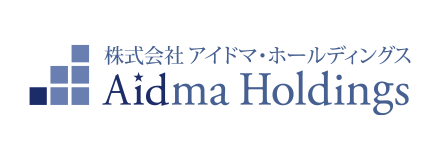club profile
Club overview
| Club | Urawa Red Diamonds |
| name | Urawa Reds |
| founding | 1950 |
| home town | Saitama, Saitama prefecture |
| Location | 〒330-0063 Urawa Garden Building 7F, 2-8-16 Takasago, Urawa Ward, Saitama City, Saitama Prefecture |
| Corporate name | Urawa Red Diamonds Co., Ltd. |
| Date of establishment | 1992年3月10日 |
| Representative Director and President | Makoto Taguchi |
Origin of Club
"Urawa" is the name of the hometown city when the club was established.
Urawa City merged with Yono City and Omiya City on May 1, 2001. It is now called Saitama City.
"Red Diamonds"
The diamond's supreme brilliance, its strength that cannot be damaged by anything, and its strong bond are encapsulated in this nickname.
Diamonds sparkle in a variety of ways depending on how light hits them. I am convinced that it is only when the light of the supporters shines on the eleven from the stands that the "Red Diamonds" will shine like a bright red flame.
"Red = Red" is the club color. The manga "Red Blood Eleven" set in Urawa is also red. The uniform of the predecessor Mitsubishi Soccer Club was also red.
Club was "Mitsubishi Urawa Football Club" from April 1992 to January 1996. It was nicknamed "Red Diamonds".
In February 1996, Club was changed to "Urawa Red Diamonds".
However, since its founding, it has been called "Urawa Reds" by most people.
club emblem

The emblem of Urawa Red Diamonds was a "rhombus" from its founding in 1992 to January 2001.
In February 2001, it was changed to the current emblem.
Emblem Main Motif - Embodying the Club Philosophy
"Everyone gathers in a single ball. A single ball creates topics of conversation and joy for everyone, expands the circle of camaraderie and friendship, and connects with the world."
It is a motif that clearly expresses the existence value of Urawa Reds and emphasizes the "philosophy" that Urawa Reds aims for. What was not possible when the club was established in 1992 has been created together with the local people. And by emphasizing this emblem, it expresses the club's stance of what the people involved in this club should do, and what they will deepen, strengthen, and expand in the future.
With this vortex at the center, we emphasize the expansiveness, and now is the time to show the future of Urawa Reds by emphasizing the meaning of this motif, and to grow as a symbol of the region.
Other motifs that make up the emblem
- primrose
- The symbol of this land - the flower of Saitama Prefecture, the flower of Saitama City, the only natural habitat in Japan is a national natural monument
- Hoshokaku
- A symbol of the history of this town that has been familiar with soccer for a long time ~ Saitama normal school building where Saitama soccer originated
- rhombus
- The symbol of the town's professional soccer club, the Red Diamonds - These three motifs are connected and summarized in the "Reds Philosophy".
The outer shell is a European-style shield that shows the team's fighting stance.
"Composition Story"
Saitama City, Saitama Prefecture. The only place in Japan where primroses grow is in the city, and soccer, which became popular in Japan during the Taisho era, was played at Saitama Normal School in Meiji 41. (The Renaissance-style school building at the birthplace of Saitama soccer has been restored and remains as a city museum.)
Saitama City is the hometown of Urawa Red Diamonds. On Trial days, everyone gathers around one ball, and that ball gives rise to conversation and joy, spreading the circle of camaraderie and friendship that connects to the world. This is the "culture" of this town.
Urawa Reds will be the face of Saitama City to the world through sports, and spread the name of the city widely. This diamond-shaped team, with its radiance, invincible strength, and strong unity, is carrying out its activities with these ideals in mind.
Hoshokaku
A neat Meiji Western-style building built in Urawa-juku in 1878. The former Saitama Normal School, the birthplace of soccer in Saitama, was built on the site of the current Saitama Kaikan.
Unknown designer. Two-story wooden building. Classical architecture from the Renaissance period to the end of the 19th century. It was named 'Hoshokaku' by Sanetomi Sanjo. In August 1878, before the completion of construction, it became the Emperor Meiji's Urawa residence, and in 1933, this building was certified as a historic site by the Minister of Education as Emperor Meiji's Urawa residence. (Cancelled in 1948) The first prefectural assembly was held here in 1878, the year after the completion of construction, and in 1900, it was also used as Saitama Prefectural Women's Normal School and High School for Girls. In 1925, when the old Saitama Kaikan was built to commemorate the marriage of Emperor Showa, it was moved to the north side and used as a prefectural library.
In 1959, it was dismantled for the reconstruction of the library, and part of the dismantled materials was transferred to Urawa City, and in 1972, it was used for the Urawa Municipal Folk Museum (now Saitama Municipal Urawa Museum). The building is a restored appearance of the same part of Hoshokaku.
chronology
| 1950 | Nakanihon Heavy Industries (Headquarters/Kobe) soccer club founded |
| 1952 | Becomes New Mitsubishi Heavy Industries Kobe Soccer Club |
| 1958 | Soccer club moved to Tokyo head office |
| 1964 | Becomes Mitsubishi Heavy Industries Soccer Club |
| 1990 | Becomes Mitsubishi Motors Soccer Club |
| 1992 | Becomes Mitsubishi Urawa Football Club |
| 1993 | J-League starts |
| 1996 | Become Urawa Red Diamonds |
character
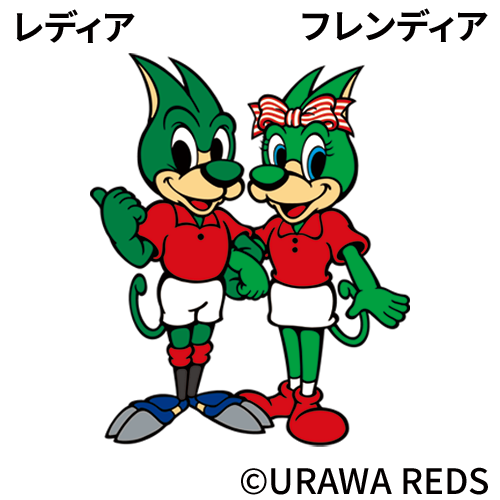
Redia
A fictitious animal developed in 1992 by vertically arranging the initials of the alphabet "MUFC" of the team name "Mitsubishi Urawa Football Club" at the time. The brain is intelligence, the heart is brave, and the physical strength is energetic. It features a powerful and fearless image.
Friendia
On January 26, 1997, she married Redia at the "Reds Festa '97" held at the Omiya soccer stadium. The bride's name, Friendia, was chosen from among 1,339 620 types of public submissions.
About the birth of twin brothers and sisters
At the finale of "REDS festa 2007" held at Saitama Super Arena on Sunday, January 28th, 2007, Redia & Friendia announced that the couple had given birth to twin children, a boy and a girl, on the night of Saturday, (Sat) 2nd, 2006, the same day the Reds won their first league championship.
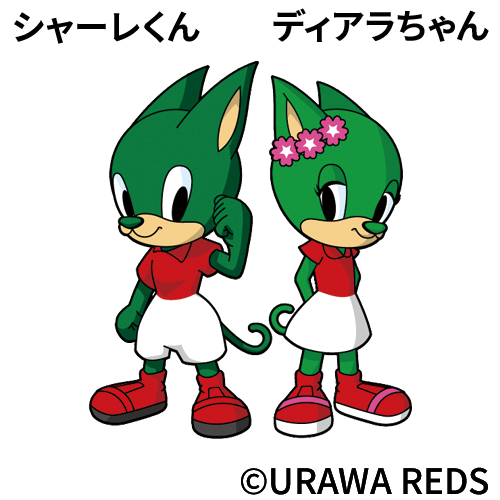
Schalekun
From the winning silver dish (petri dish) that only the J-League champion can get.
Diarachan
Friendia mix of "DIA" from her father REDIA and mother Redia and "TIARA" given to the Queen of the Nadeshiko League.

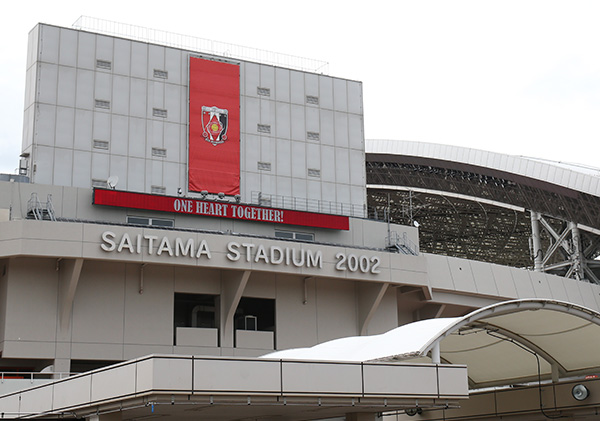
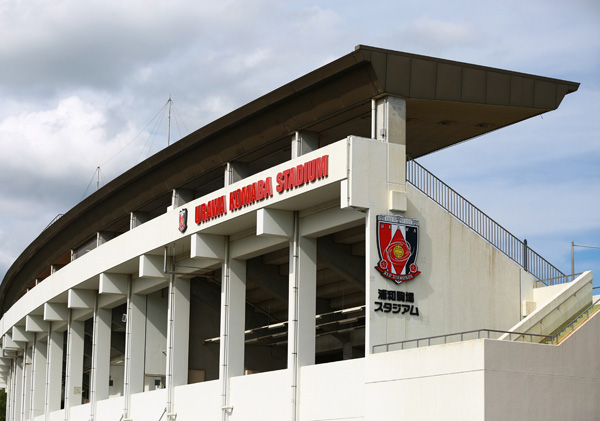
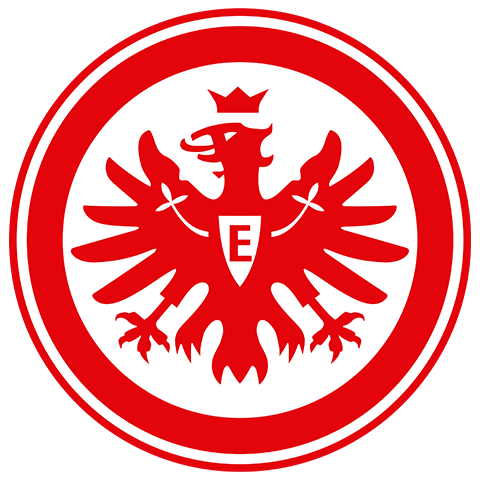

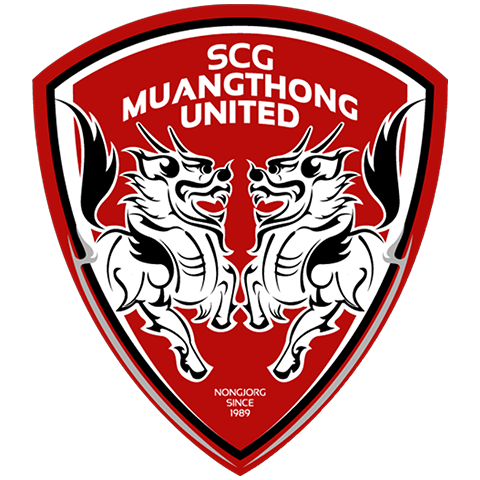




![Partner Sales Representative [Official] X](/wp-content/themes/reds2019/img/banner/partner_x_bnr.jpg.jpg)



